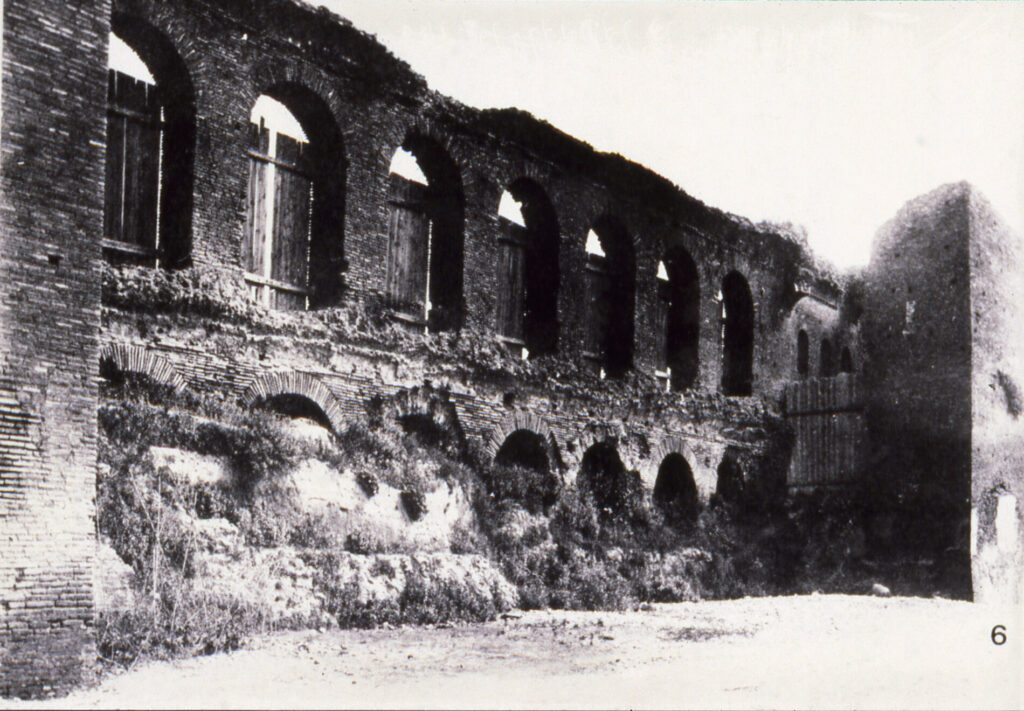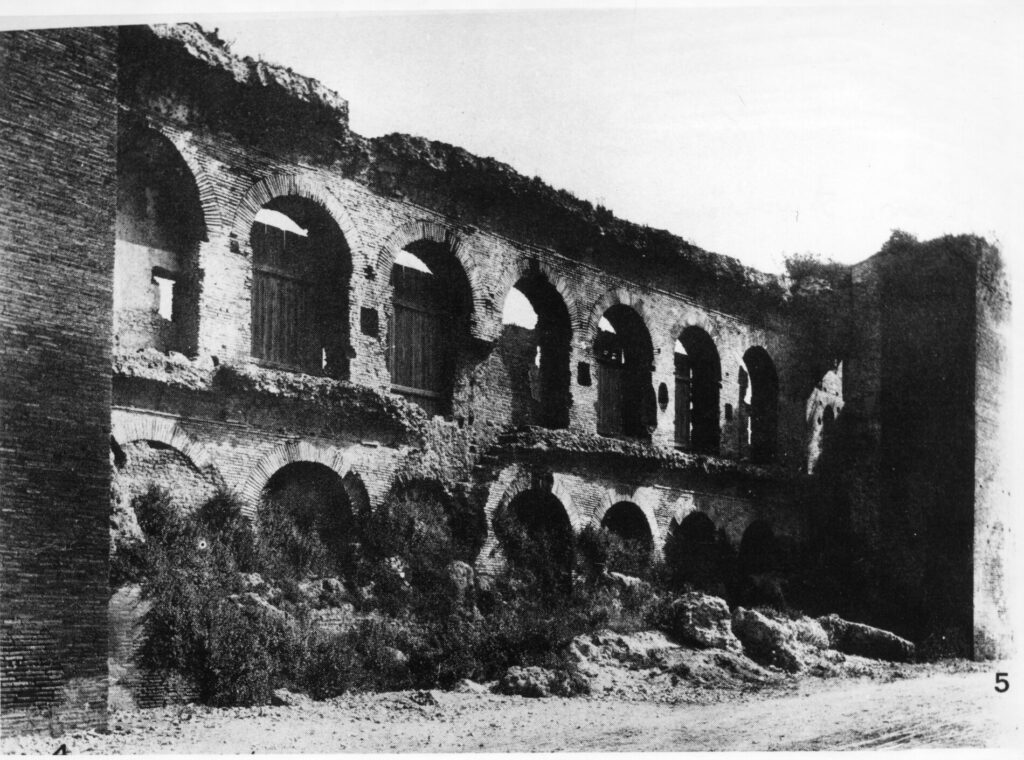For a stretch of about 60 m along today’s Via Carlo Felice Park, the wall originally stood in an existing natural hollow, which Aurelian’s architects decided to bypass with a covered double row of arches, an almost unique feature in the entire length of the fortification. In this sector, the walls were therefore higher and had a double covered walkway, instead of the full base with a patrol walkway that was the norm in Aurelian times. The basin or hollow was then filled in on several occasions over time. The infilling and the double row of arches were the main reasons for the weakening of the wall, which sustained damage several times and two major collapses between the late 19th and early 20th century. In the early 20th century, the municipal tramway company, which was granted the space in the inner garden, had part of the collapsed wall rebuilt, while in the remaining part, the Capitoline administration had the arches filled in and reinforced the wall that remained standing with the still visible tuff buttresses.


2. Section that collapsed in the late 19th century.


